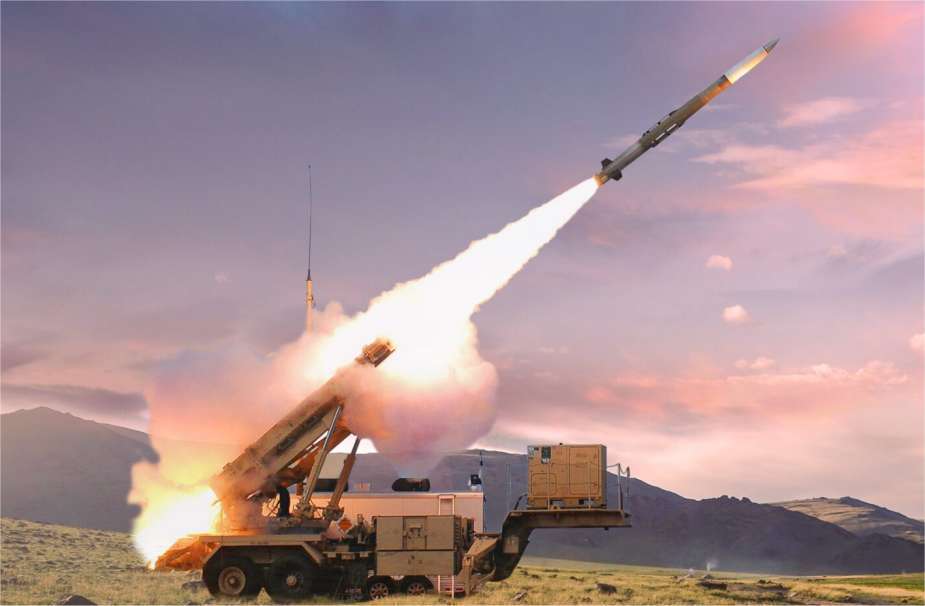Breaking news
Greece may transfer Patriot PAC-3 Air Defense System to Ukraine.
On April 22, 2024, the Greek news outlet Pronews reported that Greece is considering transferring one of its two Patriot PAC-3 air defense systems to Ukraine in exchange for security and financial guarantees offered by the United States, despite the complex relationship between Greece and Türkiye.
Follow Army Recognition on Google News at this link

US Patriot PAC-3 Air Defense System (Picture source: US DoD)
The Greek government, which has so far avoided sending major air defense systems to Ukraine, sees in this proposal a potential assurance against regional threats, particularly from Türkiye. The exact nature of the "guarantees" provided by the U.S. remains unspecified, but they could include the provision of Patriot systems shortly, drawing from the $61 billion support package designated for Ukraine.
This potential transfer has sparked debate within Greece, balancing national security concerns with the desire to support Ukraine against Russian aggression. Greek government spokesperson Pavlos Marinakis emphasized that Greece would not make any decisions that could diminish its deterrent capability or air defense, suggesting a cautious approach by the government.
In December 2022 and March 2024, Greek media reported that the Greek government was ready to transfer not only its S-300 air defense systems but also its Tor-M1 and Osa-AKM air defense systems to Ukraine, which is accustomed to using these Soviet-era defense systems. However, the Greeks are only open to exchanging their S-300PMU1 air defense missile systems for the American-made PATRIOT air defense systems, nothing else. Thus, the deal might concern the Greek S-300 systems rather than the Patriots.
The current Ukrainian demand for air defense systems is driven by an intensification of Russian aerial strikes on its cities and critical infrastructure. Ukraine has expressed the need for 25 Patriot systems to counter this threat. In response to these growing needs, Germany has already transferred one Patriot system to Ukraine and is considering providing six additional batteries. Other countries, such as Sweden, are also exploring the possibility of providing additional air defense support.
According to combat experiences shared by Ukrainian soldiers, the American Patriot air defense missile system has demonstrated high efficiency in intercepting and destroying aerial threats, such as ballistic missiles and drones, launched by Russian forces against major Ukrainian cities. Notably, the Patriot system has also shown its capability in intercepting the latest generation of Russian missiles, including the Kh-47 Kinzhal hypersonic air-launched ballistic missile.
The Patriot systems, including radars, engagement control stations, and launching stations, are designed to intercept and destroy various aerial threats, including ballistic missiles, aircraft, and drones. Each system can manage up to 16 launching stations and engage up to 9 aerial targets simultaneously, making it a crucial element of modern air defense.
The Patriot missile system, officially known as the MIM-104 Patriot, is a sophisticated surface-to-air missile (SAM) system developed by the United States. Its primary function is to detect, track, and engage incoming ballistic missiles, cruise missiles, and aircraft. It is renowned for its versatility and effectiveness in high to medium-altitude air defense.
The system is composed of several key components. At its heart is a radar set, which is crucial for the detection and tracking of threats. The Engagement Control Station (ECS) serves as the command and control hub, where operators manage the system. The system also includes several launchers, each equipped with several missiles ready for engagement.
The PAC-3 (Patriot Advanced Capability-3) variant of the Patriot missile system represents a significant advancement in the realm of air defense. This variant is specifically tailored to counter ballistic missiles. It introduces a new, more compact, and agile missile equipped with a hit-to-kill warhead, enabling it to directly strike and destroy incoming threats. The PAC-3 also incorporates upgraded radar and fire control software, enhancing its ability to detect, track, and engage targets. This upgrade significantly bolsters the system's capacity to handle multiple threats simultaneously, including advanced tactical ballistic missiles, cruise missiles, and enemy aircraft.
The PAC-3 MSE (Missile Segment Enhancement) builds upon the foundation of the PAC-3. This enhancement extends the range and altitude capabilities of the missile, allowing for engagement of threats at greater distances and higher altitudes. The PAC-3 MSE includes a more powerful motor, larger control fins, and an upgraded guidance system. These improvements enable the missile to maneuver more effectively against sophisticated ballistic and cruise missiles, as well as advanced aircraft.
The GEM-T (Guidance Enhanced Missile-Tactical) is another variant within the Patriot system. The GEM-T is an upgrade of the earlier PAC-2 missile, focusing on improving its ability to counter tactical ballistic missiles, cruise missiles, and enemy aircraft. This upgrade involves enhancements to the missile's guidance and control systems, ensuring greater accuracy and reliability. The GEM-T retains the explosive fragmentation warhead of the PAC-2, differentiating it from the hit-to-kill approach of the PAC-3. This variant provides a cost-effective solution to upgrade existing missile stocks, extending the life and capability of the Patriot system.

























